site search
online catalog
EMOR T. WEAVER PHILADELPHIA IVORY GRIP SILVER HILT EAGLE POMMEL HORSEMAN’S SABER

Hover to zoom


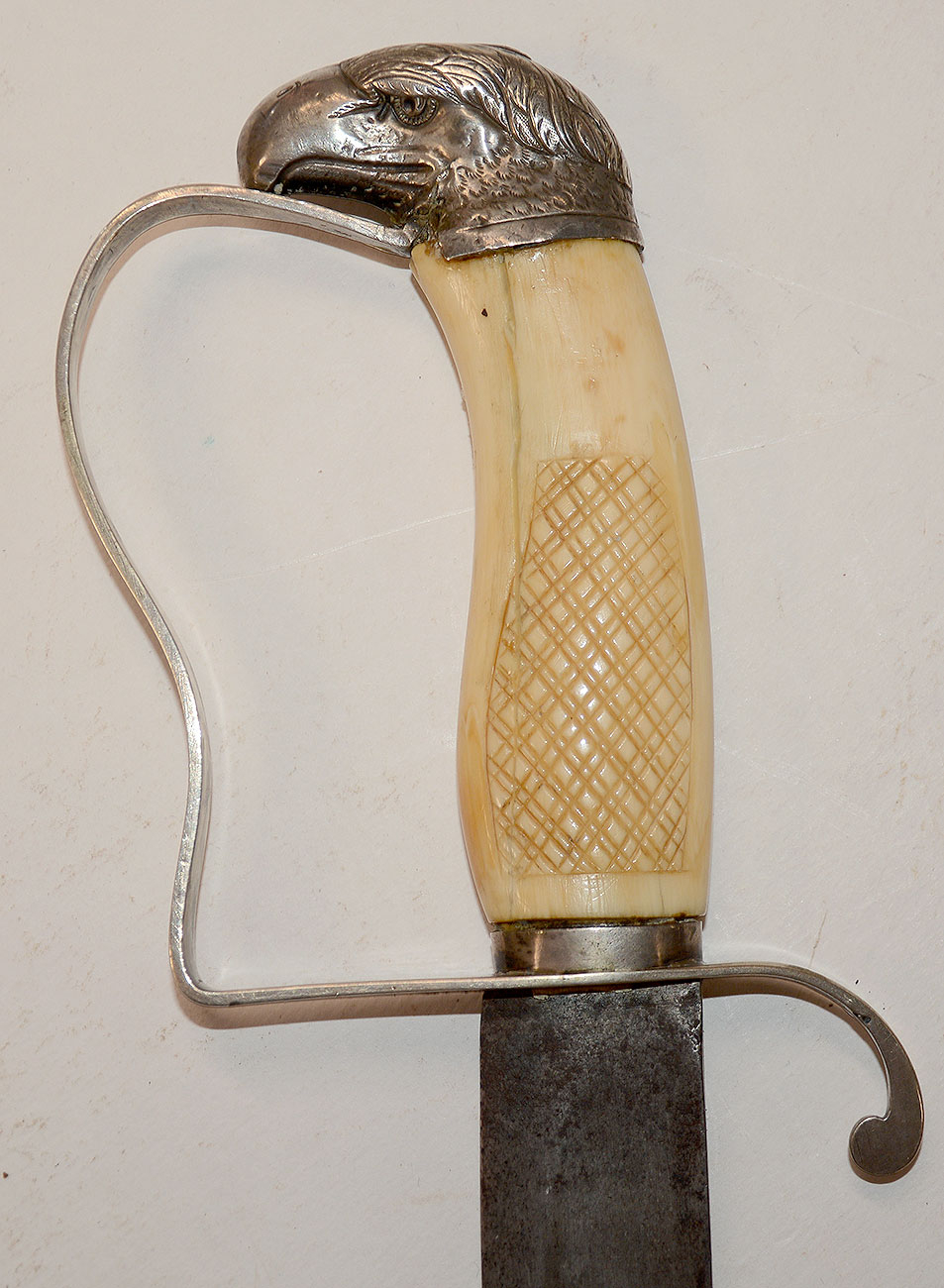
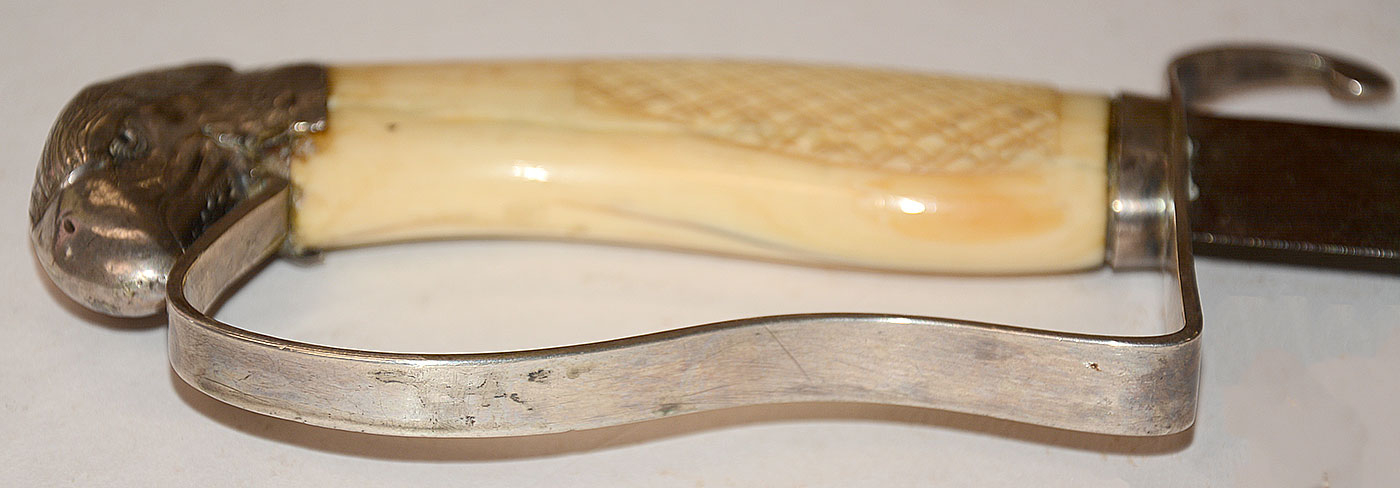
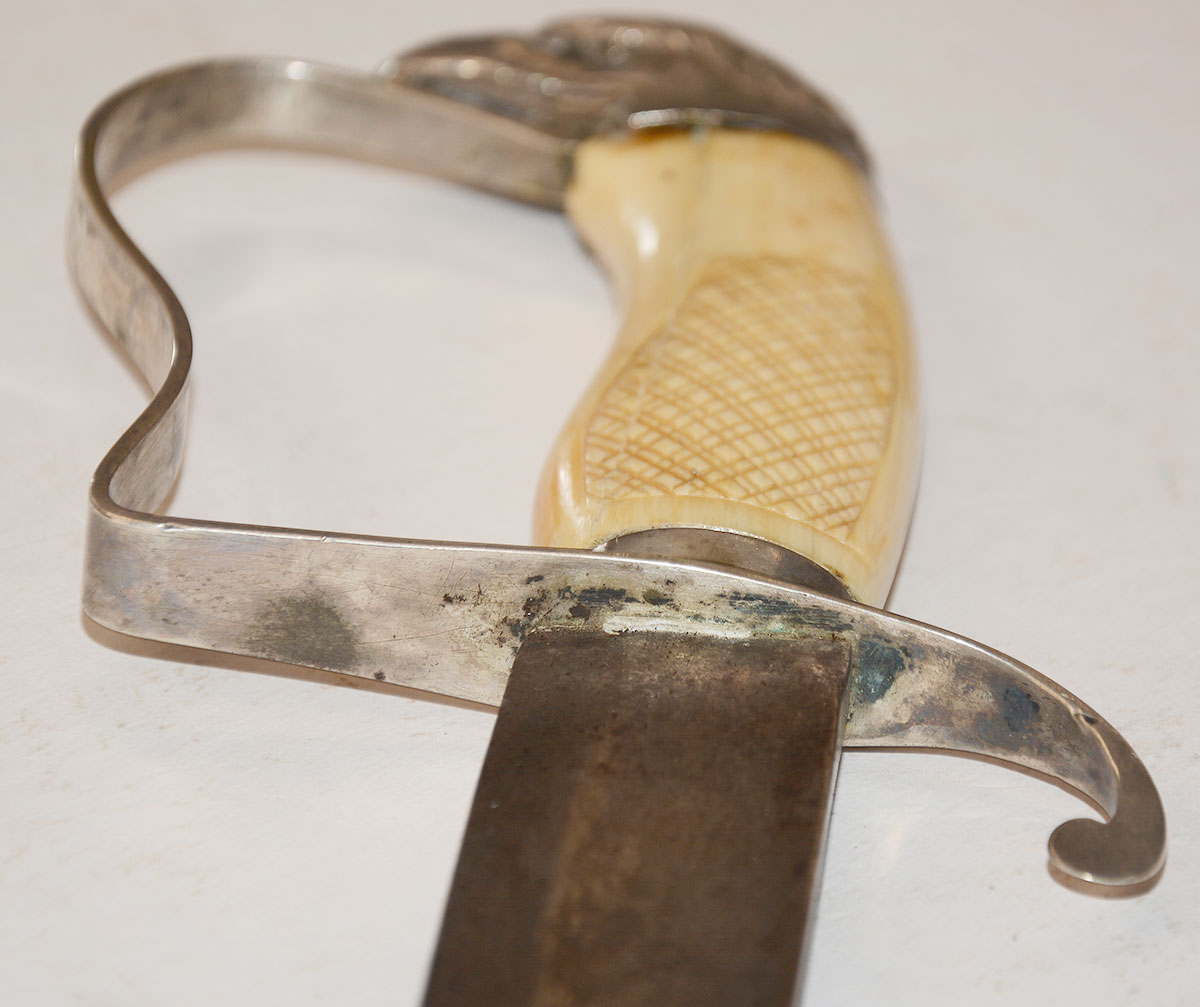
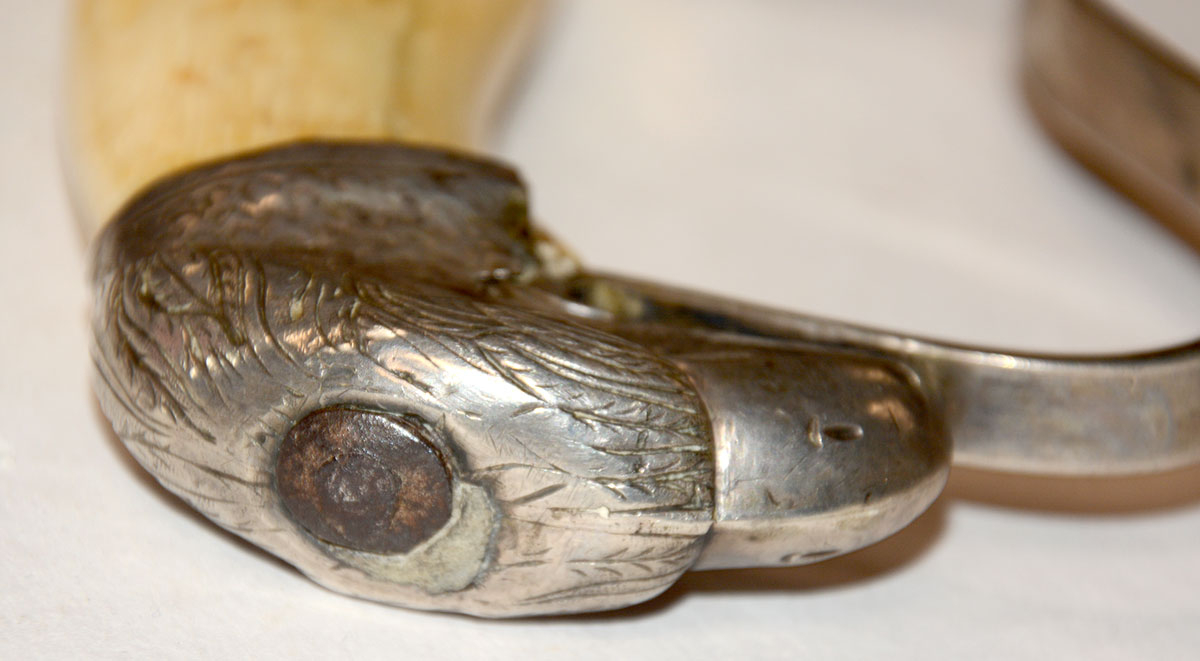
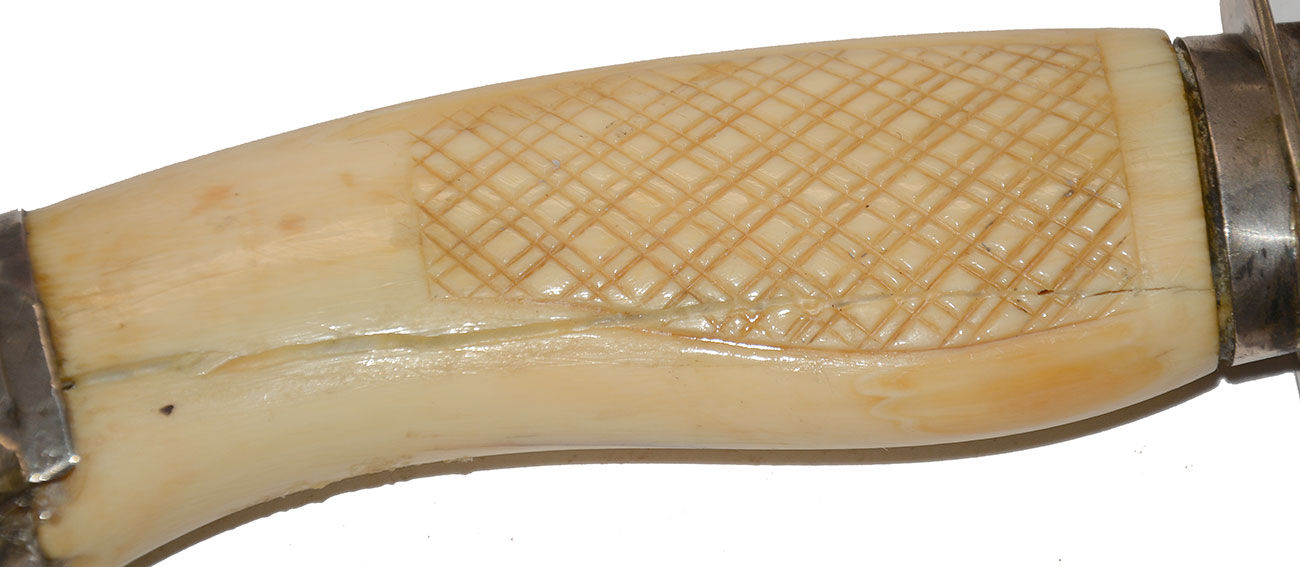


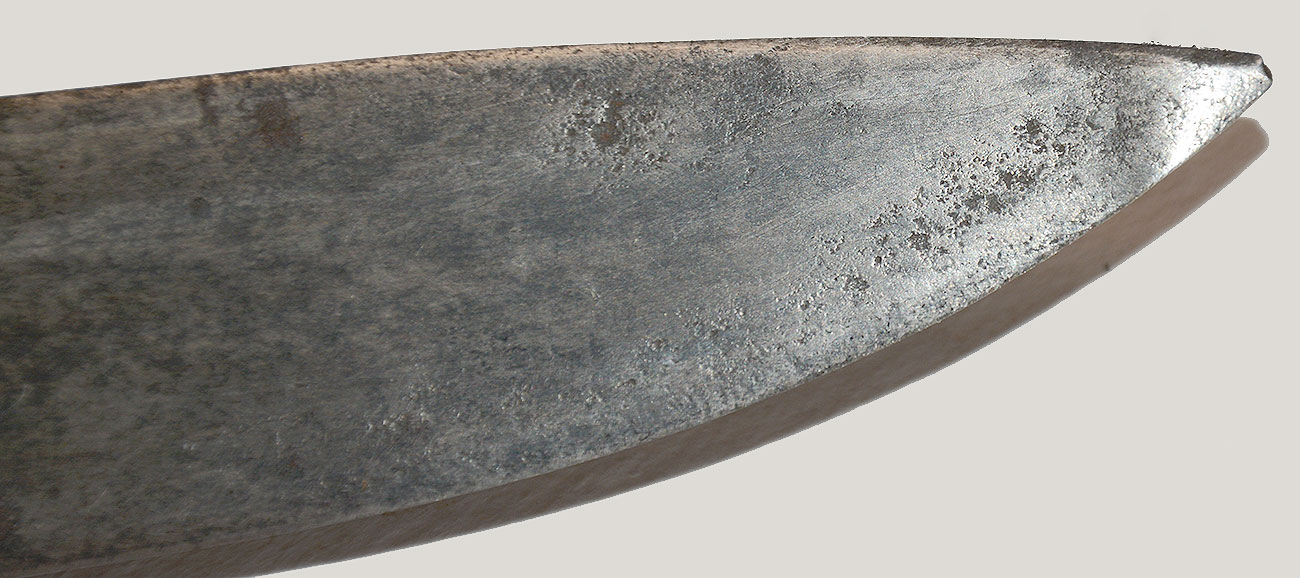
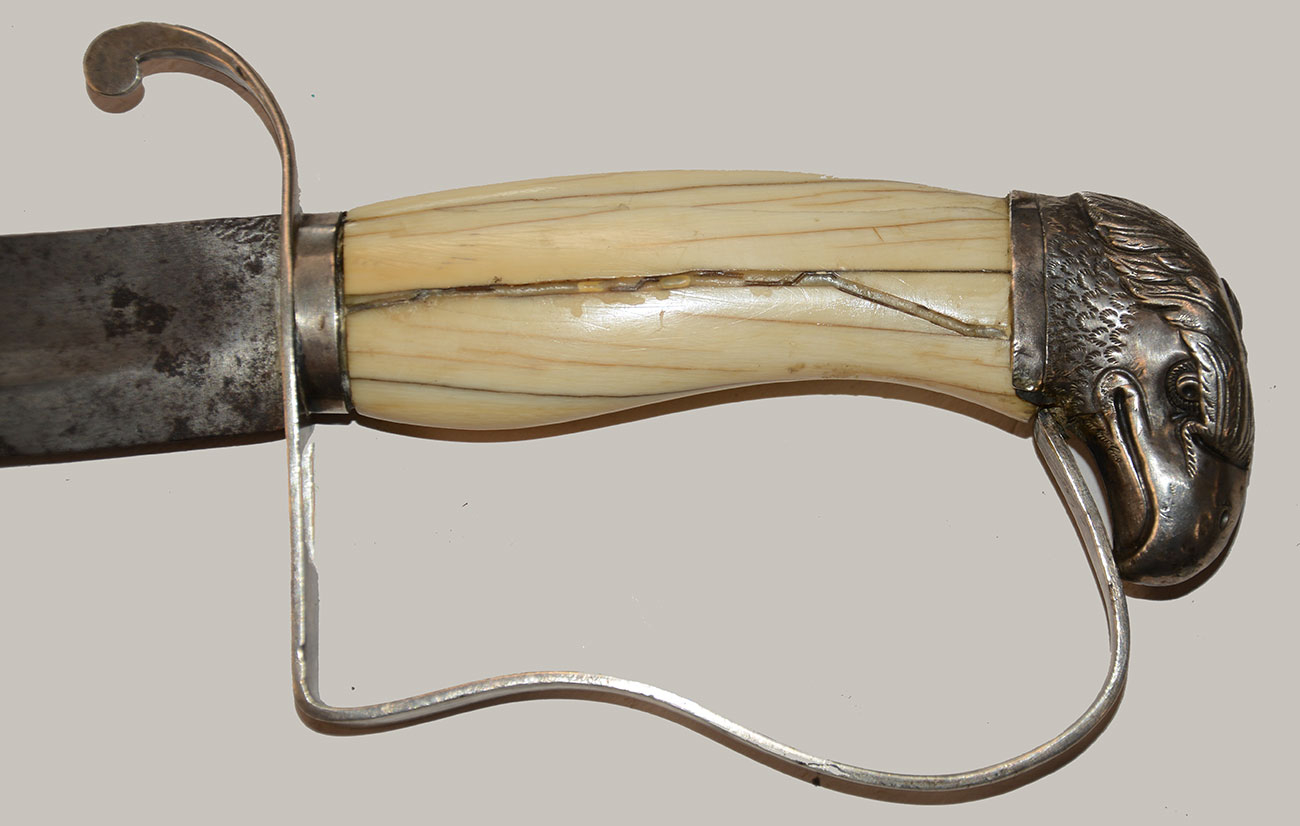
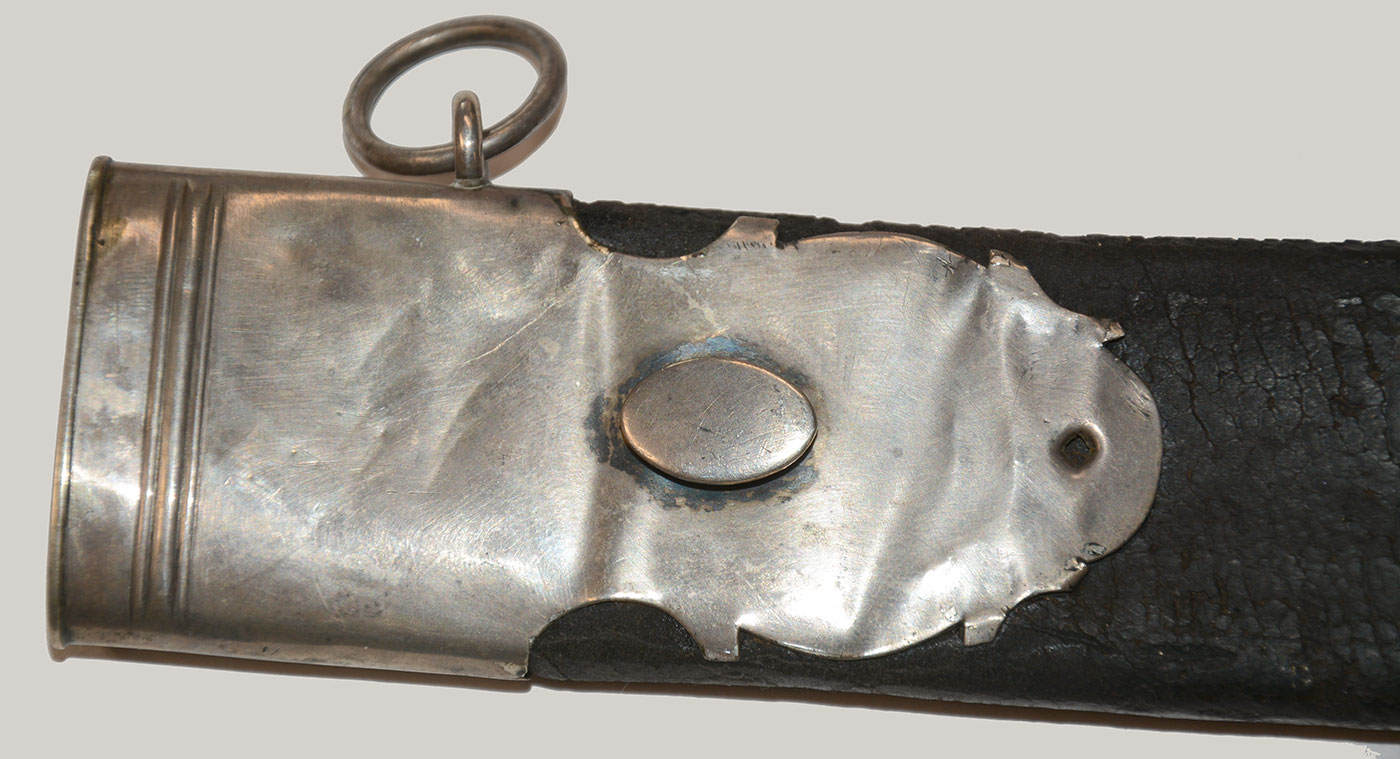

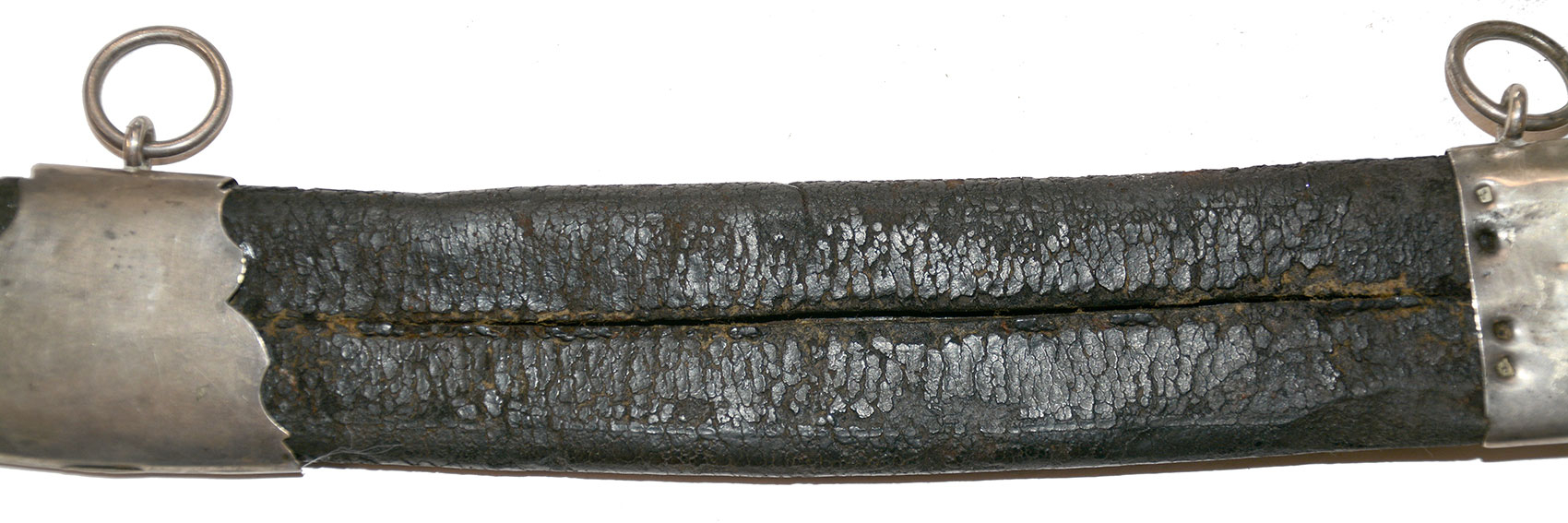

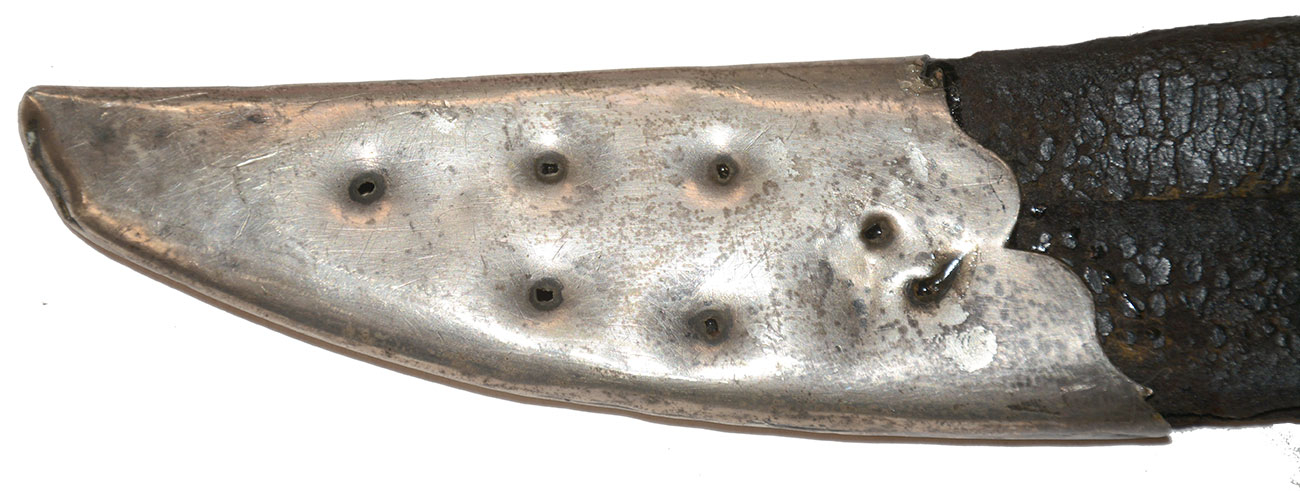
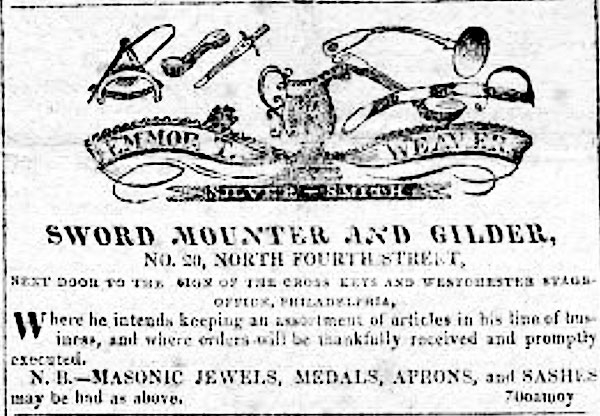
$2,500.00 SOLD
Quantity Available: None
Item Code: 1293-01
In his section on Weaver in “The American Eagle-Pommel Sword,” Andrew Mowbray notes, “Both marked, and unmarked, specimens of his work are actively sought after and considered prime collectibles among today’s advanced collectors.” This is unmarked, but stylistically identifiable as a Weaver product. Born in 1786, Emor Trego Weaver was one of seven children of Joshua Weaver, a silversmith, and by 1808 was listing himself in city directories as, “silversmith, watchcase maker, gilder, jeweler and swordsmith.” Mowbray felt the bulk of his work dated after 1825, but noted his early inclusion of sword-cutlery in his trade listings and this saber, with its free-floating eagle pommel fits his “Type-1” eagle pommel on a sword shown by Mowbray as Figure 43 and dated ca. 1810, with Weaver later moving to the use of a backstrap to strengthen his thin silverwork of the pommel. Also pointing to an earlier date is the uniform width and relative thickness of the reverse-P knucklebow, which morphed into a later, characteristic, thin, wide “tea-spoon” shape at the upper curve, probably when actual field service seemed less likely.
This measures 37” overall and has a 31-1/4” blade. The scabbard is black leather with silver mounts: throat with sling ring and frog button, middle mount with ring, and drag. The eaglehead pommel is very good- stern looking, with no crest, and down-turned upper beak. The blade tang is secured by the simple expedient of peening it over on a silver washer on top of the eagle’s head, a method mentioned by Mowbray in connection with Weaver’s early efforts to strengthen his two-piece eagle pommels that were typically of very thin silver. The grips are ivory, thin ovoid in cross-section, showing a swell toward the guard and decorated on the obverse with a panel of double-line cross-hatching with the border following the contour of the grip. A stable crack runs long the lower edge on the obverse. The reverse is plain, the ivory showing some striations, with crack along middle the forking as it runs up to the pommel. A silver ferrule bands the grip at the guard.
The blade is steeply curved, with unstopped, wide, central fuller, and spearpoint tip. The metal is generally smooth, though with some shallow pitting near the tip, silver gray for the most part, shading a bit dark on the lower and upper sections, otherwise just a couple of edge nicks and some darker gray areas mixed in along the obverse forte, etc. Please see out photographs. The blade shows no etching or maker’s marks, but Weaver is known for using imported blades, British blades in his earlier work like this and Solingen products in his later.
The silver scabbard mounts have matching simple incised lines at the throat, top of the drag, and spreading downward in an inverted “V” on the middle mount. The carrying rings and frog stud are in place. The upper mount shows some dents or creases, but no missing elements. The upper mount shows two pins on the reverse and hole for two more or that were intended to hold in place by the pressure of the punctures. The reverse of the drag shows seven similar holes with one pin in place. The scabbard shows crazing and crackling to the finish, but not much flaking and preserved good color overall. The seam on the reverse of the scabbard is open, with the stitching gone, but no gaps in the leather, though with the sword sheathed the blade will show along the open seam.
We show one of Weaver’s advertisements and note the presence of a sword and dirk in particular among his offerings. He reportedly stopped advertising in city directories in 1833, which is usually assumed to be the end point of his working life, though he passed away in 1860. This is a good, early example of his work of the War of 1812 era, an impressive silver-hilt, eagle pommel horseman’s saber, combining elegant form in the hilt with an emphasis on function in the practical blade, suitable for an officer or well-heeled member of the elegant elite who might yet be called upon to draw it in circumstances other than parade. [pe][ph:L]
~~~~~~~~~~~~~~~~~~~~~~~~~~~~~~~~~~~
THIS ITEM, AS WITH ALL OTHER ITEMS AVAILABLE ON OUR WEB SITE,
MAY BE PURCHASED THROUGH OUR LAYAWAY PROGRAM.
CLICK HERE FOR OUR POLICIES AND TERMS.
THANK YOU!
Inquire About EMOR T. WEAVER PHILADELPHIA IVORY GRIP SILVER HILT EAGLE POMMEL HORSEMAN’S SABER
Most Popular
Historical Firearms Stolen From The National Civil War Museum In Harrisburg, Pa »
Theft From Gravesite Of Gen. John Reynolds »
Selection Of Unframed Prints By Don Troiani »
Fine Condition Brass Infantry Bugle Insignia »
featured item
CLOSE TO REGULATION VIRGINIA CONFEDERATE CAPTAIN'S FROCK COAT
The coat is made of mid- gray wool, possibly imported from England. It has full-length skirts ending in the typical and desirable raw edge. The sleeves have an 8 1/2-inch billow at the elbow. The dark blue wool standing collar is 1-1/2 inches high… (1268-060). Learn More »


